
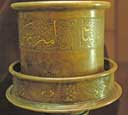
Iran or Central Asia. 1396-1397. Cast bronze, engraved, inlaid with gold and silver. One of six huge candlesticks ordered by Tamerlane for the Turkestan mausoleum of Ahmad Yasavi. A middle section is missing. A compete example is in the Hermitage Museum, with an inscription indicating the artist was from Isfahan.
Inv. nos.: OA 7079, 7080. Website
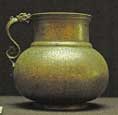
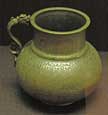

Iran/Afghanistan, Heart. Ca. 1480-1490. Cast copper alloy, engraved, gold and silver inlay. H.: 12.7; Dia.(body): 14.5 cm. Prototype possibly a jade jug made for Ulugh Beg but more likely Chinese ceramics (in turn based on Iranian metal forms). Made by 'Abd Husayn ibn Mubarak Shah. Inscriptions include Persian mystical poetry.
Inv. no.: MAO 697. Website See also the comparison of an analogous jug with a Ming porcelain one.
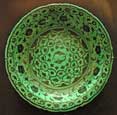
Iran, beg. of 15th c. CE. Fritware, underglaze painted.
Inv. no.: MAO 698. Website (b/w photo)
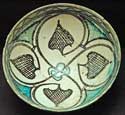
Iran, end of 14th-beg. of 15th c. Fritware, underglaze painted. Found at Varamin (Iran).
Inv. no.: OA 7501. Website

Syria or Iran, 15th c. CE. Fritware, underglaze painted.
Inv. no.: MAO 670.
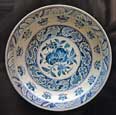
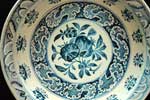

Iran, ca. 1500 CE Fritware, underglaze painted.
Inv. no. MAO 868. Website

Cup with floral decoration. Iran or Central Asia, 1450-1500. Engraved jade. Dia.: 14.5; H.: 6.5 cm. Enterd the French royal collection between 1684 and 1701, where the Persian script was described erroneously as being Chinese.
Inv. no.: MR 199. Website

Transoxania, end of 14th c. CE. Carved and engraved ivory with traces of polychrome.
Inv. OA 7459. Website
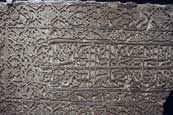
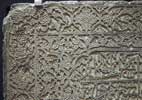
Uzbekistan, Samarkand. Carved gray basalt. 38 x 58 cm. Inscription includes fragment from Quran XX: 7. The cenotaph from which this comes is in the Uzbekistan Museum of Art and History in Samarkand.
Inv. no.: MAO 342 (ex-Musée Guimet Inv. no.: MG 21727). Website